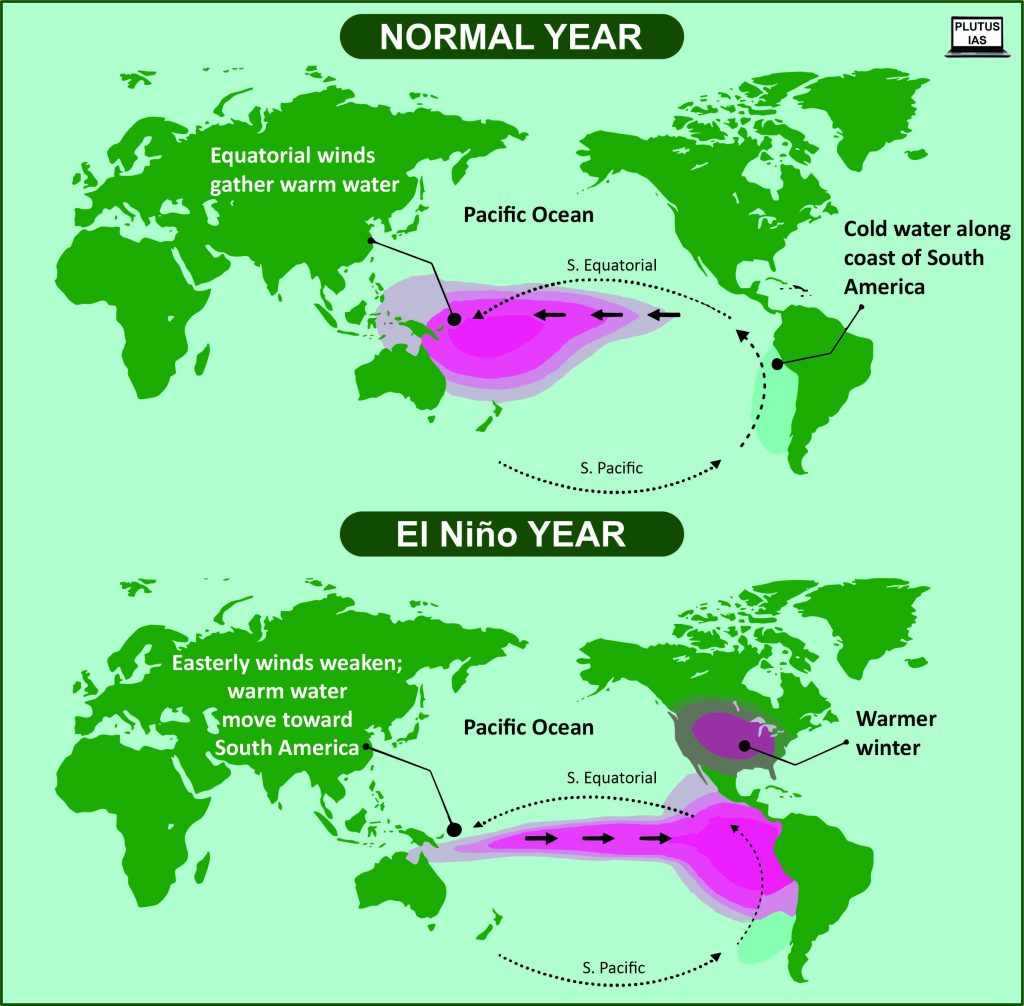19 Jan Snowless Kashmir
Snowless Kashmir
This article covers ‘Daily Current Affairs’ and the topic details of “Snowless Kashmir’’. This topic is relevant in the “Geography” section of the UPSC CSE exam.
UPSC MAINS GS1 Syllabus: Important geophysical phenomena
Why in the News?
The main Indian tourist attractions, Jammu & Kashmir and Ladakh, have seen little snowfall or rainfall this winter, which has resulted in a drop in visitors.
Scenario this year
- In Jammu & Kashmir and Ladakh, winter precipitation primarily takes the form of snowfall. The first snowfall often occurs in the first part of December and lasts through most of January in this area.
- However, this season has been generally dry. The whole of Jammu and Kashmir as well as Ladakh have mostly avoided rain or snow this winter, despite the fact that the absence of snow is most noticeable in Gulmarg, a popular tourist destination at this time of year.
- According to data from the India Meteorological Department (IMD), Jammu and Kashmir experienced an 80% rainfall shortfall in December and a 100% (none at all) deficiency in January thus far. There has been absolutely no precipitation in Ladakh in December or January.
What causes Snowless Kashmir?
-
Western Disturbance
- A progressive rise in temperatures, perhaps caused by climate change, and a decrease in Western Disturbance episodes have been linked to the overall trend of decreased snowfall. The main cause of winter precipitation in the Himalayan region is Western Disturbances.
- There has been a downward tendency in the quantity of Western Disturbance events, which has led to a decrease in total precipitation over the winter.
- Large rain-bearing wind systems known as “Western Disturbances” originate outside of Afghanistan and Iran and move eastward, bringing moisture with them from as far away as the Atlantic and Mediterranean Seas.
-
Role of Climate Change and El Nino
- Numerous research have shown that Kashmir’s decreasing snowfall is partly due to climate change.
- Snowfall is further impacted by the faster rate of temperature increase in upper elevation places compared to the lowlands.
- It is proposed that an additional element influencing global air circulation and contributing to the region’s precipitation shortfall is the ongoing El Nino event in the eastern Pacific Ocean.
- In the past ten years, Jammu & Kashmir has experienced a few relatively dry winters with very little snowfall, including in 2022, 2018, and 2015.

El Niño is a climate phenomenon characterized by the periodic warming of sea surface temperatures in the central and eastern equatorial Pacific. This disrupts normal weather patterns, leading to droughts, floods, and other extreme conditions globally. El Niño events occur irregularly, impacting agriculture, fisheries, and weather-related disasters across regions.
-
Climate and Weather Pattern
This winter, there has been little snowfall or rain in any part of Jammu and Kashmir or Ladakh, with substantial deficits of 80% in December 2023 and 100% in January 2024 (i.e., no rain). In these areas, winter precipitation primarily takes the form of snowfall, which is essential to the local climate.
What are the Implications of Dry Winter or Snowless condition in Kashmir?
-
Long-term implications
- reduced production of hydroelectricity
- An upsurge in the glacier melting rate
- Negative effect on the drinking water supply since there is limited groundwater recharge due to the sparse snowfall.
-
Short term implications
- An upsurge in forest fires may occur during a dry spell.
- Drought affecting agriculture
- Decrease in crop yield.
-
On Agriculture
Winter crops, especially horticulture, depend on the winter snow because it keeps the soil moist. When there is not enough snowfall, the yields of apples and saffron get negatively impacted.
-
Less Tourists:
Due to a lack of snow, Gulmarg, a popular winter tourist destination in Kashmir, is experiencing a dramatic drop in visitor numbers this year. Even with a significant influx of tourists in 2023, officials anticipate a minimum 60% decrease in foot traffic. The local economy is getting negatively impacted as ski resorts and other companies aren’t generating enough profit due to the lack of snow.
Download plutus ias current affairs eng med 19th Jan 2024
Prelims practice questions
Q1) Consider the following statements regarding El-Nino
1) It occurs in every 2 years
2) It causes droughts in South America
3) La Nina is the opposite phenomenon of El-Nina
Which of the following statements given above is/are correct?
- a) 1 and 3
- b) 1 and 2
- c) 1 only
- d) 2 and 3
ANSWER: D
Q2) With reference to ‘Indian Ocean Dipole (IOD)’ sometimes mentioned in the news while forecasting Indian monsoon, which of the following statements is/are correct? (UPSC Prelims 2017)
1) The IOD phenomenon is characterised by a difference in sea surface temperature between tropical Western Indian Ocean and tropical Eastern Pacific Ocean.
2) An IOD phenomenon can influence an El Nino’s impact on the monsoon.
Select the correct answer using the code given below:
(a) 1 only
(b) 2 only
(c) Both 1 and 2
(d) Neither 1 nor 2
ANSWER: B
Mains practice question
Q1) Compare and contrast the effects of El Niño and La Niña on the Indian climate. Highlight the distinct characteristics of these phenomena and their varied impacts on monsoons, temperatures, and extreme weather events in different parts of the country.
Q2) Explain the role of Western Disturbances in influencing the weather in northern parts of India. How do these disturbances contribute to winter precipitation and temperature variations? Provide specific instances to illustrate their impact.
I am a content developer and have done my Post Graduation in Political Science. I have given 2 UPSC mains, 1 IB ACIO interview and have cleared UGC NET JRF too.



No Comments